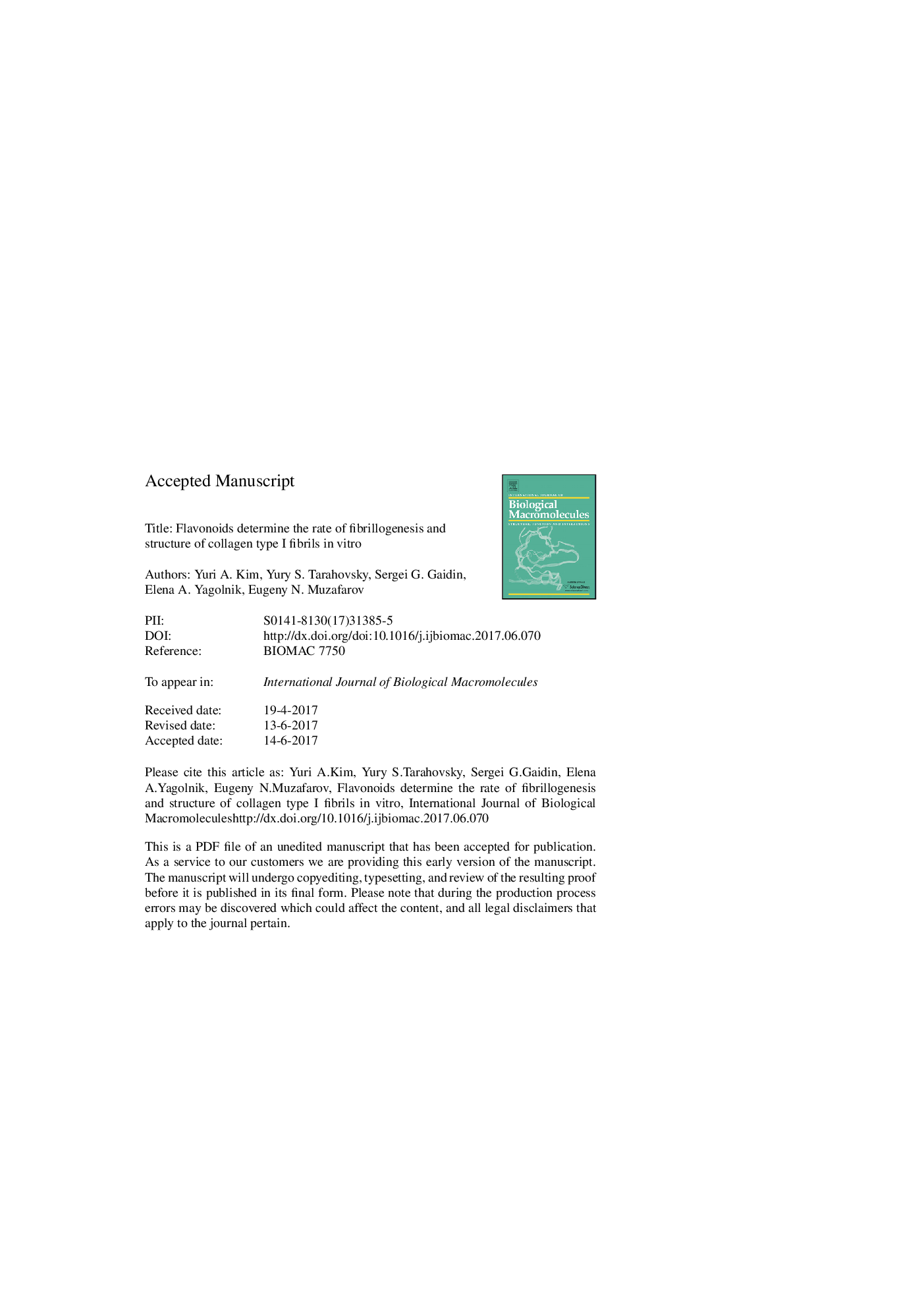| Article ID | Journal | Published Year | Pages | File Type |
|---|---|---|---|---|
| 5511689 | International Journal of Biological Macromolecules | 2017 | 16 Pages |
Abstract
Collagen fibrils are produced from collagen monomers not only in vivo, but also in vitro. The ability to have an influence on the structure and properties of fibrils may find medical application and can be useful for controlling the formation of collagen gels and sheets in tissue engineering. Here we investigated the influence of flavonoids, distinguished by the number of hydroxyl groups in the B-ring, on the formation of collagen fibrils. A correlation was found between the number of hydroxyl groups, lipophilicity of molecules and their ability to influence the fibril formation. The molecules with a smaller number of hydroxyls (flavone and kaempferol) were more lipophilic and accelerated the formation of fibrils, whereas molecules with a larger number of hydroxyls (quercetin, myricetin) were more hydrophilic and prevented the fibril formation. Among the studied substances, an exception was taxifolin, which accelerated the formation of fibrils in spite of the increased hydrophilicity of this compound. However, molecular modeling revealed that all investigated accelerators of the fibril formation, including taxifolin, were distinguished by the increased lipophilicity exactly in the B-ring. This suggests a critical role of the B-ring lipophilicity in the ability of the studied flavonoids to accelerate the formation of collagen fibrils.
Related Topics
Life Sciences
Biochemistry, Genetics and Molecular Biology
Biochemistry
Authors
Yuri A. Kim, Yury S. Tarahovsky, Sergei G. Gaidin, Elena A. Yagolnik, Eugeny N. Muzafarov,
